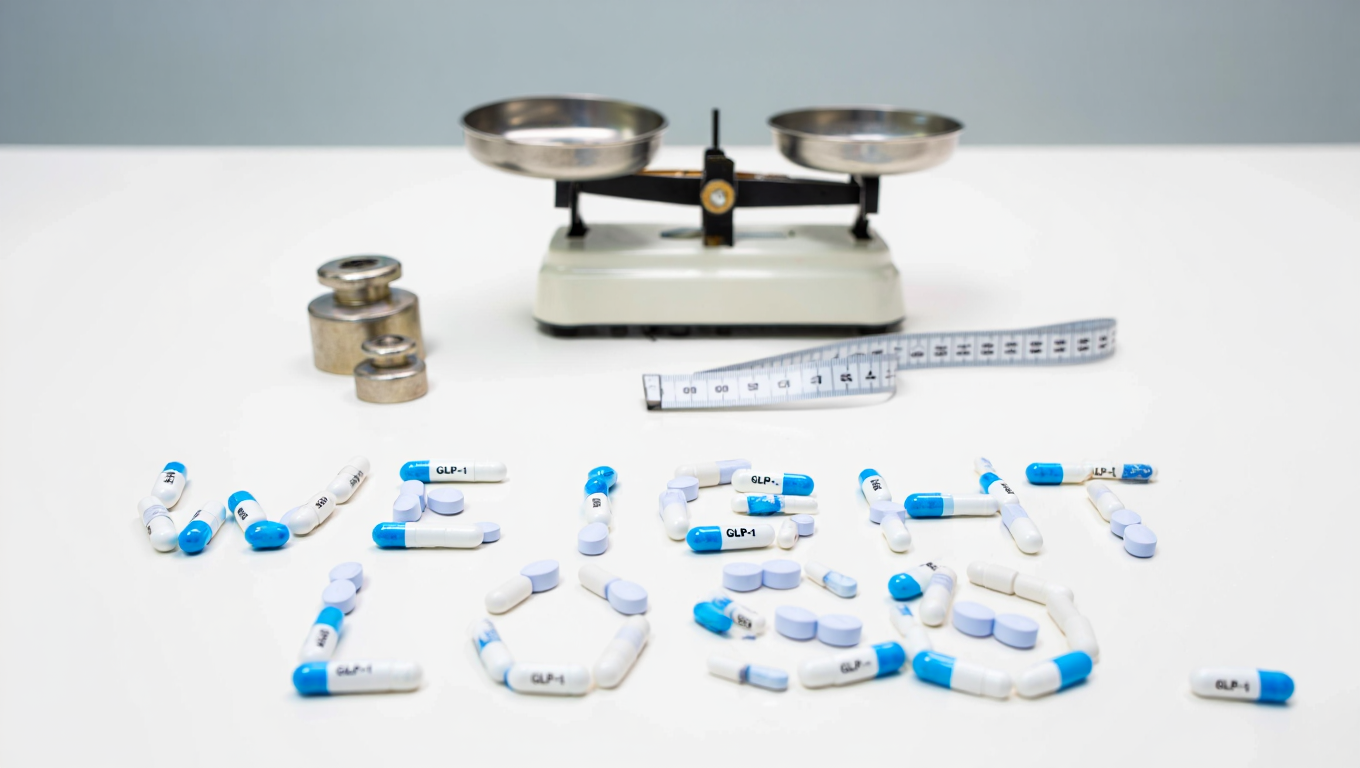
Weight Down, Risk Up? The Hidden Cost of GLP‑1 Success

GLP‑1 drugs like Ozempic, Wegovy, and Mounjaro have transformed the landscape of weight loss and metabolic care. Originally developed for people with type 2 diabetes, these medications are now widely used for obesity treatment and general weight management. In the U.S. alone, over 16 million adults are using them regularly, an unprecedented shift in how we approach chronic weight issues (The Washington Post, 2025).
But as the world embraces the promise of rapid weight loss, an important concern is being overlooked: significant muscle loss. While the scale might show progress, the reduction in lean mass could quietly increase long-term health risks, especially those tied to movement, strength, and injury.
Muscle Loss: The Side Effect No One Talks About
Clinical studies show that 20-40% of weight lost on GLP‑1 medications comes from lean body mass, particularly muscle tissue. A clinical trial of semaglutide (Nature Reviews Endocrinology, 2025) reported that up to 39% of weight loss was lean mass. A UVA study also found that GLP‑1 users may experience reduced cardiorespiratory fitness alongside muscle loss, meaning weight reduction doesn't always equal improved health.
These drugs suppress appetite and alter digestion, which often leads to lower protein intake and minimal exercise engagement. Without a counteractive effort—like resistance training and dietary support—users may shed more muscle than they realize.
Why Muscle Loss Threatens MSK Health
Muscle isn’t just about strength or aesthetics, it plays a foundational role in musculoskeletal (MSK) health. Strong muscles stabilize joints, absorb impact, and allow for safe movement. When muscle mass decreases, the entire MSK system is compromised.
Reduced muscle can lead to:
- Joint instability, increasing strain on ligaments and tendons
- Poor posture and balance, elevating fall and injury risk
- Faster progression of MSK disorders such as lower back pain, knee pain, and early-onset arthritis
This is especially concerning in aging populations or those with preexisting MSK conditions, where even a small loss of muscle mass can lead to loss of independence or long recovery periods from falls.
In short, preserving muscle isn’t optional, it’s vital to maintain movement, stability, and daily function.
What the Experts Recommend
Leading researchers agree that GLP‑1 therapy must be paired with an intentional strategy to protect lean mass. The core recommendations include:
- Resistance training at least 2–3 times per week to stimulate muscle retention (Mass General, 2024)
- Protein intake of 1.2–2.0 grams per kg of body weight per day, adjusted for activity level and goals (ACE Fitness, 2025)
- Body composition tracking, not just weight, ideally with tools that assess muscle, fat, and functional capacity (Health.com, 2024)
Despite these recommendations, most programs don’t yet offer scalable tools to monitor movement quality or personalize activity for users on GLP‑1s.
Where Sency Fits In
As more people adopt GLP‑1 medications, there’s growing demand for integrated care, programs that don’t just reduce weight but also preserve strength, balance, and function.
That’s where Sency comes in.
Sency is an AI-powered motion tracking technology that helps healthcare providers, wellness companies, and rehab centers deliver personalized movement plans remotely and at scale. Using a simple mobile camera, without hardware needed, Sency:
- Analyzes body movement in real time, detecting postural imbalances, weak points, and risks
- Generates tailored resistance and mobility routines, calibrated to the user’s abilities and goals
- Adapts over time as the user progresses, keeping training relevant and safe
For GLP‑1 users, this means they can lose fat while maintaining (or building) the muscle they need to stay functional. For care teams, it means they can confidently support this new class of patients with evidence-based movement strategies without increasing workload.
The Bottom Line
GLP‑1 drugs have unlocked a powerful new path for treating obesity but with that power comes responsibility. Without active muscle preservation, we risk replacing one health problem with another.
Muscle is the backbone of MSK health, safety, and independence. Protecting it should be a top priority for any GLP‑1 user, and for every provider supporting them.
Solutions like Sency offer a bridge between innovation and longevity. With personalized movement guidance powered by AI, GLP‑1 users don’t have to choose between fast results and long-term wellbeing. They can have both.
Looking to protect your patients’ muscle and movement health? Explore our solution on the website and drop us a message to get started.
.png)





.svg)
